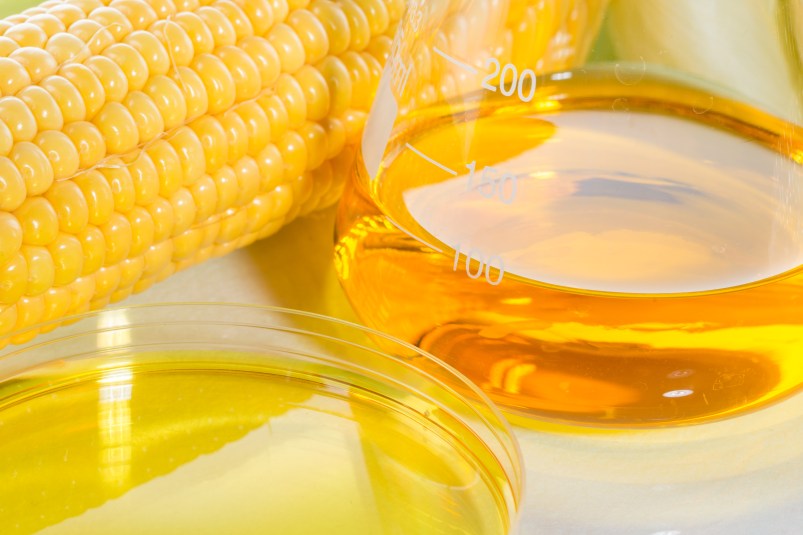This Common Ingredient Causes Weight Gain, Diabetes, Fatty Liver, and More
Check your labels to protect your body.

Packaged and processed foods can contain hidden ingredients that wreak havoc on our health. This applies even to foods that are marketed as “healthy,” like protein bars and drinks, cereals, and salad dressings. And if you want to protect yourself from extra weight gain, liver problems, heart complications, and blood sugar imbalances, you need to check your food labels for one of the worst culprits — high fructose corn syrup.
High-fructose corn syrup (HFCS) is made from corn syrup which is extracted from regular corn. Corn syrup contains mostly glucose, a carbohydrate-derived sugar. To make it taste sweeter, enzymes are added to turn some of that glucose into fructose. In the 1970s and 80s, the price of regular sugar was growing higher while the cost of this genetically modified (GMO) corn syrup was cheap.
With that in mind, places like the soft drink industry went the way of using highly processed corn syrup to sweeten their sodas, and other food and beverage companies quickly followed suit. While it may have been beneficial for companies to produce their products for a cheaper price, the consequences on public health have been innumerable.
Many health experts blame the epidemic of obesity and other metabolic conditions on the mass-consumption of artificial sugars like HFCS. Even more specifically, HFCS has shown in studies to have detrimental affects on the body, causing conditions like excessive weight gain, fatty liver, and diabetes.
When it comes to weight gain, results from several studies have indicated that excessive sugar consumption can lead to obesity. Results from long-term studies suggest that consumption of HFCS plays a major role in that development of obesity. Even further, one study found that fructose-sweetened beverages didn’t activate the part of the brain which controls appetite, while glucose-sweetened beverages did. In other words, you’re more likely to feel unsatisfied after eating or drinking foods sweetened with glucose, which can then make you consume in excess.
Our main source of fructose used to be natural foods like fruits and vegetables — but those also contain fiber, which slows down the absorption of sugar into the blood stream, helping to offset blood sugar imbalances. In processed foods loaded with fructose and little to no fiber content, that sugar directly enters the blood stream and leads to high blood sugar. Several studies have shown that consumption of HFCS can lead to insulin resistance, which can then lead to type 2 diabetes. On top of this, HFCS consumption has also been linked to metabolic syndrome, which can pave the way for obesity, heart disease, and even cancer. Eek!
Another condition that’s often on our radar is fatty liver, which is when excess fat accumulates in the liver and impairs its function, leading eventually to liver failure. Glucose and triglycerides are overproduced by a fatty liver, which can also lead to metabolic disorders like diabetes and heart disease. Fructose also gets metabolized by the liver, and when it’s consumed in large amounts, studies have indicated that this poses major health risks for the liver. Similar research also suggests that lowering your intake of HFCS can help protect the liver from fat accumulation.
Unfortunately, high fructose corn syrup can be hidden in a lot of our most commonly consumed foods. Some of the culprits to look out for include cereals, ketchup and other condiments, salad dressings, cereals, candy, yogurt, soda and other sweetened beverages, canned fruit, bread, “fruit” juice, baked goods, granola bars, packaged snacks, energy drinks, jams and jellies, and frozen foods. To be safe, always read your food labels and know that when you stay away from HFCS, you’re doing a great thing for your long-term health.












